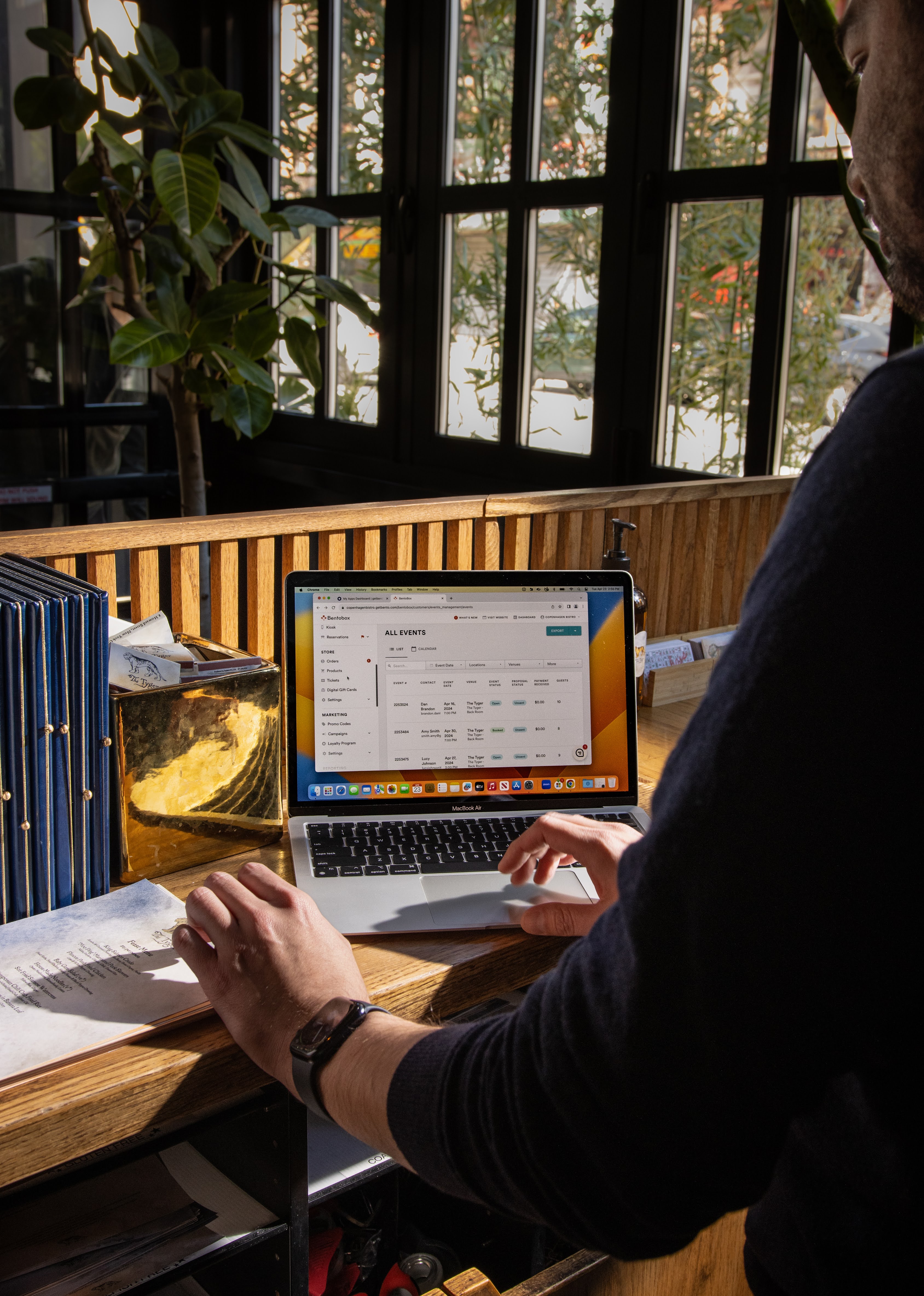Holidays
Insights From Last Year's Top Holiday Catering Restaurants
October 28, 2021
What restaurants can learn from 2020's holiday season about how to maximize sales in 2021.
Last year, the holiday season — typically a busy time for restaurants — was hampered by the ongoing COVID-19 pandemic. Takeout and delivery were the driving force while on-premises dining was mainly subjected to limited or outdoor seating.
However, restaurants were resilient in the face of these unprecedented changes. Digital technologies allowed for new revenue streams, helping them stay afloat. Solutions like Pre-Order & Catering helped optimize operations, increase discovery and boost sales.
For many, finding a better way to take pre-orders has been a lifesaver for their business throughout the pandemic, particularly over last year’s holiday season. The examples below showcase how restaurants adapted during the 2020 holiday season to promote the catering arm of their business and drive sales. Now that dynamics have changed again, these insights provide tips on how to get the most out of this year’s holiday season.
Holiday Catering Will Remain a Major Revenue Driver in 2021
In a normal year, catering sales fluctuate through January and October before spiking over the holidays. While most holiday gatherings, typically between friends and family, involve home-cooked meals, other festive celebrations are often catered: office parties, fundraisers, banquets and more. In 2018 and 2019, catering revenue increased by 18% in November and December compared to the previous five months.
But 2020 was a year like no other. The pandemic forced guests to forego their traditional holiday celebrations, which revolve around home-cooking, and restaurant catering flourished as an alternative. Even without large gatherings like parties and banquets, catering sales increased 317% in November and December compared to the previous five months — 18x more than the previous two years.
The public health situation has improved over the last 10 months, which will make traditional holiday celebrations more common in 2021. However, restaurants should still expect demand to far exceed pre-pandemic levels.
Nearly 40% of diners say concerns about the Delta variant will influence them to order in from restaurants this holiday season, which suggests that while some diners will return to traditional holiday gatherings, others will likely repeat how they celebrated last year. Additionally, the exposure to holiday catering that many diners experienced last year will lead some of them to make it part of their ongoing holiday traditions. Even when they return to traditional gatherings, the benefits of holiday catering — restaurant-quality food with last time spent in the kitchen — are more likely to connect now that they have experienced them.
Restaurants need to meet this demand with best-in-class catering strategies and solutions. Fortunately, after last year, there have never been more examples of restaurants that maximized catering revenue over the holidays. By studying how they succeeded, restaurants can drive their own success in 2021.
Insights From Last Year’s Top Holiday Catering Restaurants
Even in the face of uncertainty, success stories of restaurants adapting last year are abundant. The quick adoption of online ordering solutions kept restaurants open, even if diners couldn’t inhabit them.The examples below illustrate how some restaurants navigated last year’s pandemic holiday season. We broke them down with advice that restaurants can apply to the upcoming holidays.
Seamore’s
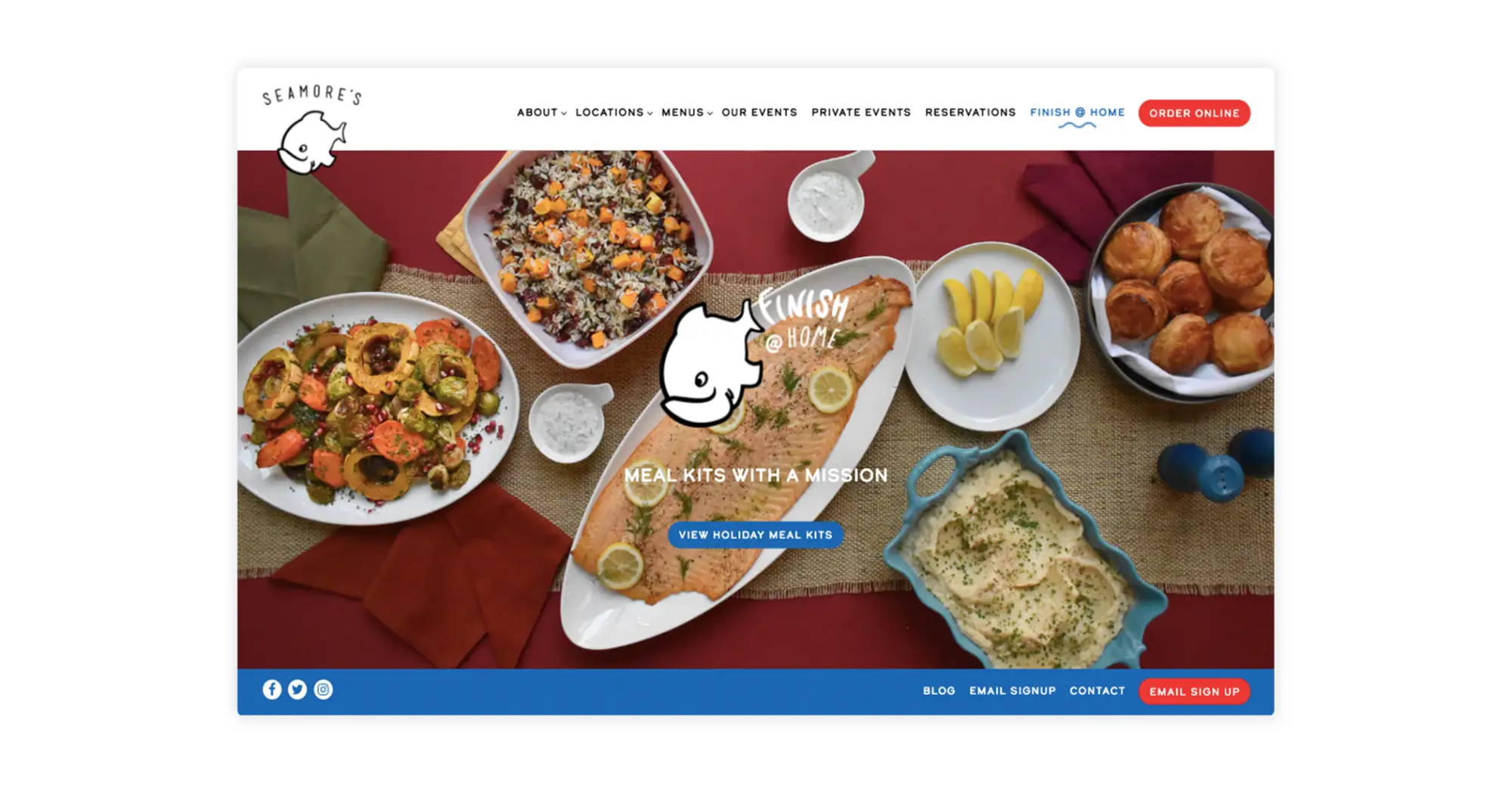
Key Insight: Study the Landscape
Seamore’s, a sustainable seafood restaurant with locations throughout New York City, learned quickly that it needed to adapt to survive the pandemic. “We started the meal kit conversation in May or June [of 2020],” said Anna Vagner, Director of Sales and Marketing at Seamore’s. “Our CEO was seeing all these things pop up — specifically from The Smith. They had a pretty large marketplace that sells both frozen goods as well as meal kits and large format family-style meals. We already felt like we were kind of late to the game.”
After establishing its meal-kit marketplace “Finish @ Home” using BentoBox’s Pre-Order & Catering platform, Seamore’s saw another opportunity for growth.
“In November, we realized that people wouldn’t be able to have corporate holiday parties,” Vagner explained. “Everyone was working from home from wherever they are…and wanted to bring their teams together. So we developed a bash-in-a-box, if you will, where we essentially sent out prosecco, holiday bingo and little snacks like cheese and charcuterie boards. And we got quite a lot of orders from different companies.”
Ultimately, Seamore’s saw great success from pivoting to special catered event and meal kits, selling over $15,000 through catering during holiday season.
CheeseBoarder

Key Insight: Be Flexible
CheeseBoarder, a catering company from West Palm Beach, Florida, knew it had to be flexible when companies started canceling large events, its primary source of business.
"When COVID hit and all of the events started canceling, we decided to pivot," Aaron Menitoff, owner of CheeseBoarder, told a local Florida news station. "We thought about how [to] expand our business model where we can go farther than our trucks can drive, and that’s where nationwide shipping came in."
The result of CheeseBoarder’s pivot — nationwide delivery of gourmet charcuterie boards — was so successful it landed on the Forbes 2020 Holiday Gift Guide. More than that, as Menitoff explained, “It allowed us to stay in business and allows everybody to keep their jobs.”
Hill Country Barbecue
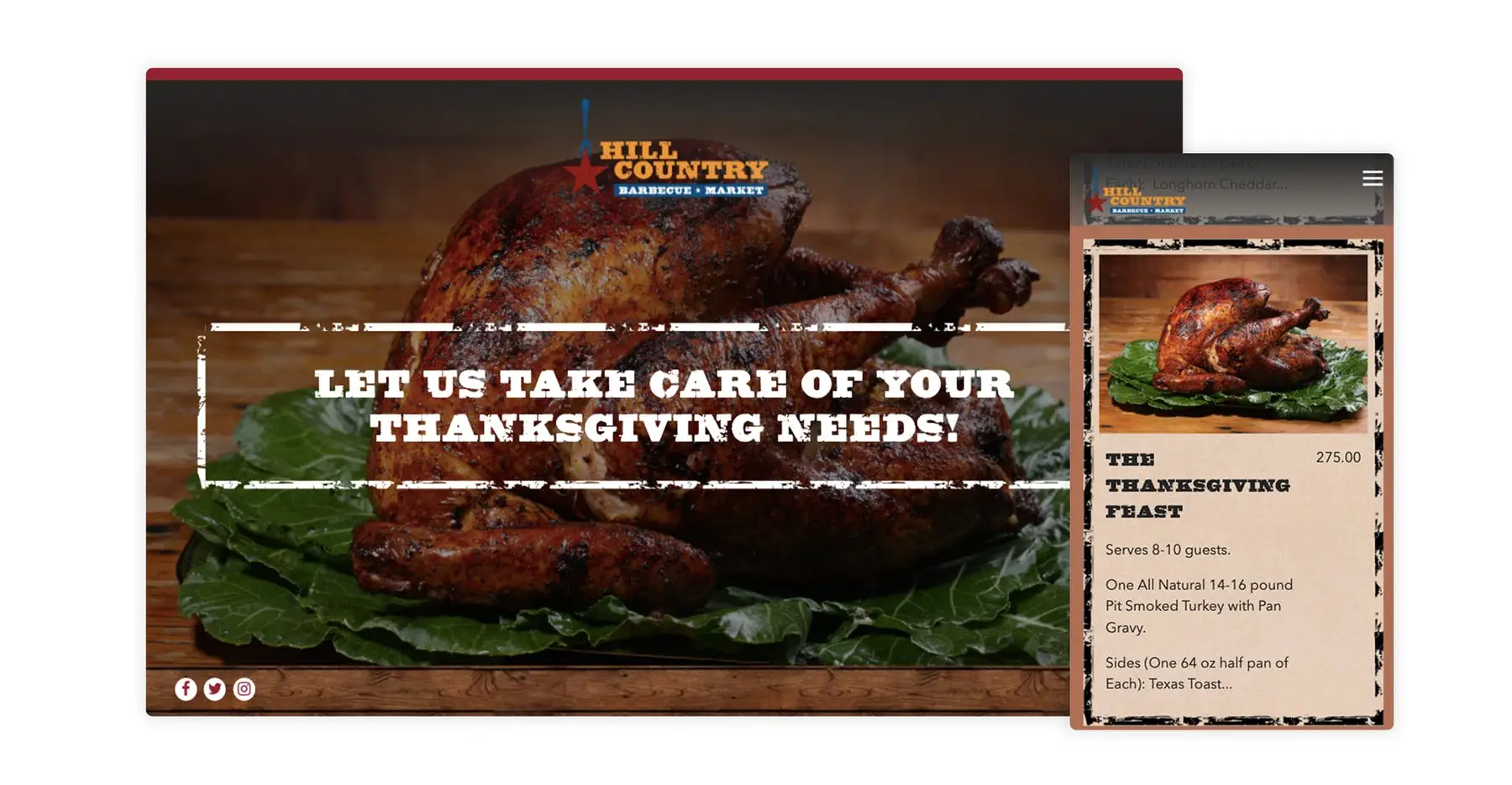
Key Insight: Provide Comprehensive Holiday Solutions
No restaurant drove more catering revenue through BentoBox last year than Hill Country Barbecue, a beloved Texas-style BBQ joint that operates in New York City and Washington D.C.
Its signature catering offerings are comprehensive solutions like “The Thanksgiving Dinner” for four or “The Thanksgiving Feast” for 10. Diners that prefer flexibility can order a la carte, but diners that want convenience can order a complete, well-rounded meal in a couple of clicks.
It’s important to remember that everyone — not just restaurant workers — is busier during the holidays. Curated solutions that save people time while providing peace of mind will always be popular.
REIGN
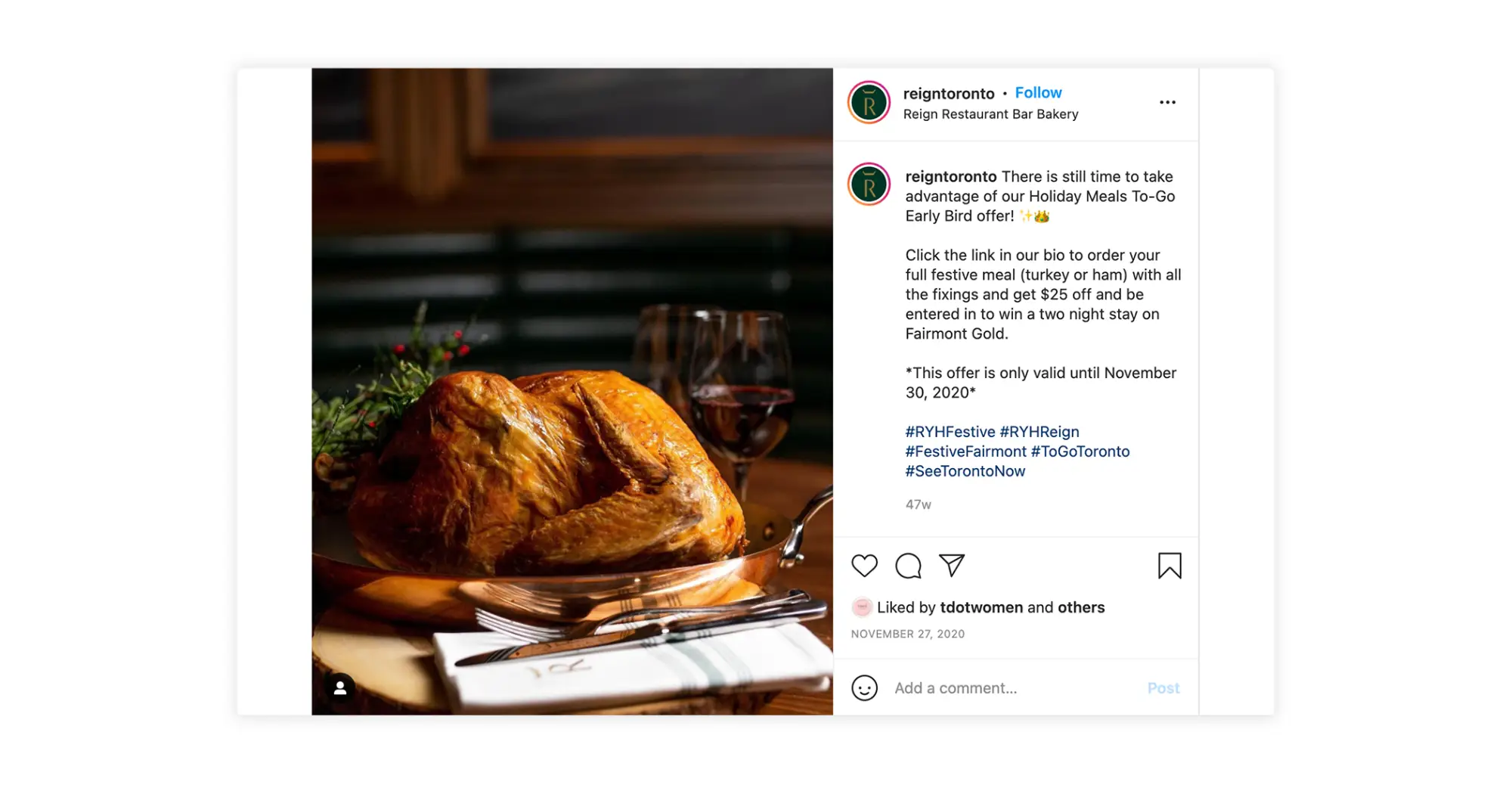
Key Insight: Offer Time-Sensitive Promotions
REIGN, a French-influenced brasserie at the Fairmont Royal York hotel in Toronto, created its at-home meal program in response to the COVID-19 pandemic. The restaurant dedicated a page on its website to explain the inner workings of the program and encouraged visitors to pre-order its “Holiday Meals To-Go.”
To stimulate demand for those to-go meals, REIGN promoted an “early bird” offer on Instagram and other channels. If diners ordered a holiday meal by a certain date, they received $25 and could win a two-night stay at the hotel.
Promotions and incentives are a smart way to push diners from “consideration” to “purchase.” Catering competition will be high during the upcoming holiday season, but tactics like this help restaurants stand out and convert people before they shop around.
How Restaurants Can Maximize Holiday Catering
Like Seamore’s and so many others, restaurants look to their peers to get a sense of what’s trending across the industry, especially in an ever-evolving pandemic climate. But a few additional operations and tactics are also key for maximizing holiday revenue.
1. Use an Online Catering Platform
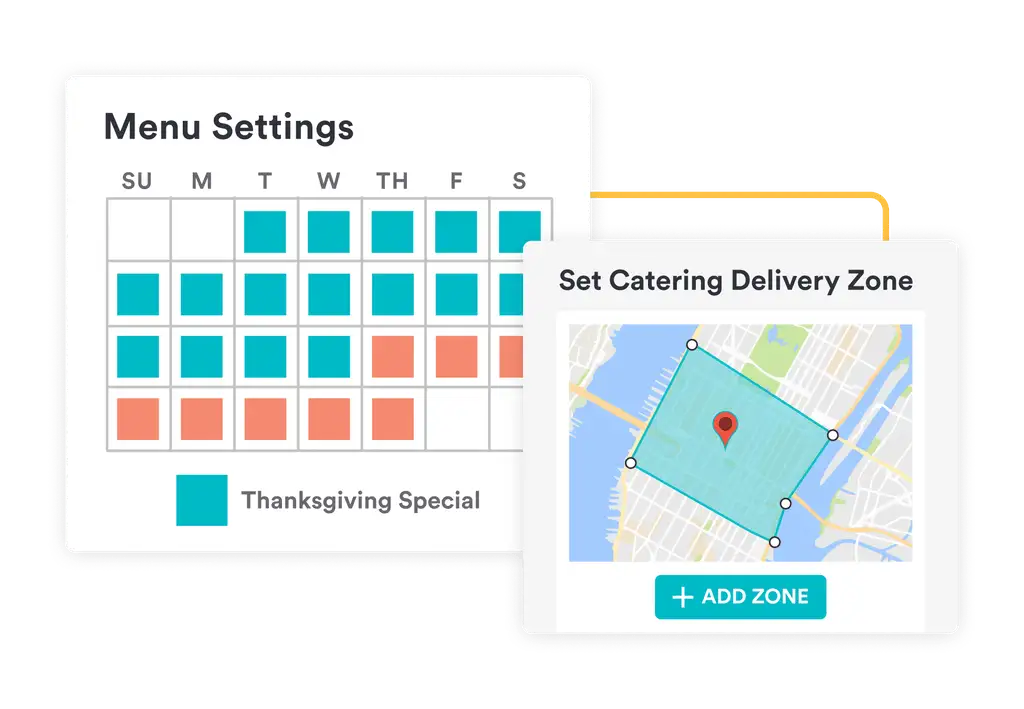
Restaurants that don’t already have a solution to capture online catering orders and inquiries are missing out on lost revenue. More than ever, online catering platforms play an important role in a restaurant’s bottom line and include features that solve many operational issues. These features simplify back-of-house operations, saving restaurants time and money. In many ways, they act as an extra set of hands when restaurants are short-staffed, as so many are. In addition to benefiting operators, online catering benefits diners by providing easy access to a headache-free ordering experience.
2. Offer Creative Packages
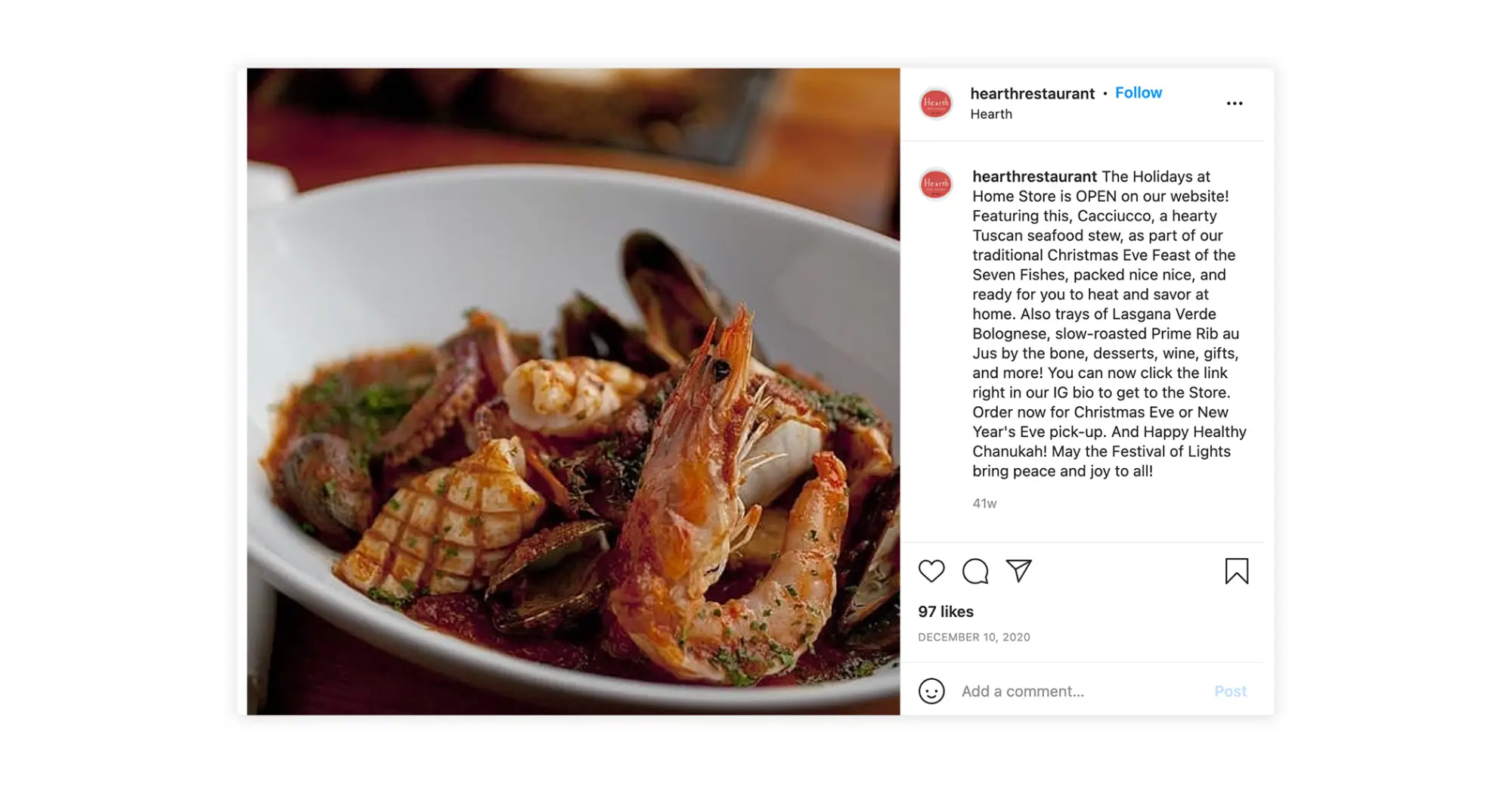
Hearth promoted its “feast of the seven fishes” holiday meal for pre-order on Instagram
Another aspect of maximizing holiday catering sales is to get creative and be open to experimenting. Hearth is a great example. Last year, the New York City-based Tuscan-American restaurant saw an opportunity to offer something new for its customers while staying true to its culinary roots. Hearth brought its casual-yet-elevated dining experience into diners’ homes with pre-order packages that celebrated the traditional Italian “feast of the seven fishes.” Celebrating culinary traditions creates deep connections with the guests who share those traditions, while also allowing others to try an authentic version of something new.
3. Promote Catering Through Email
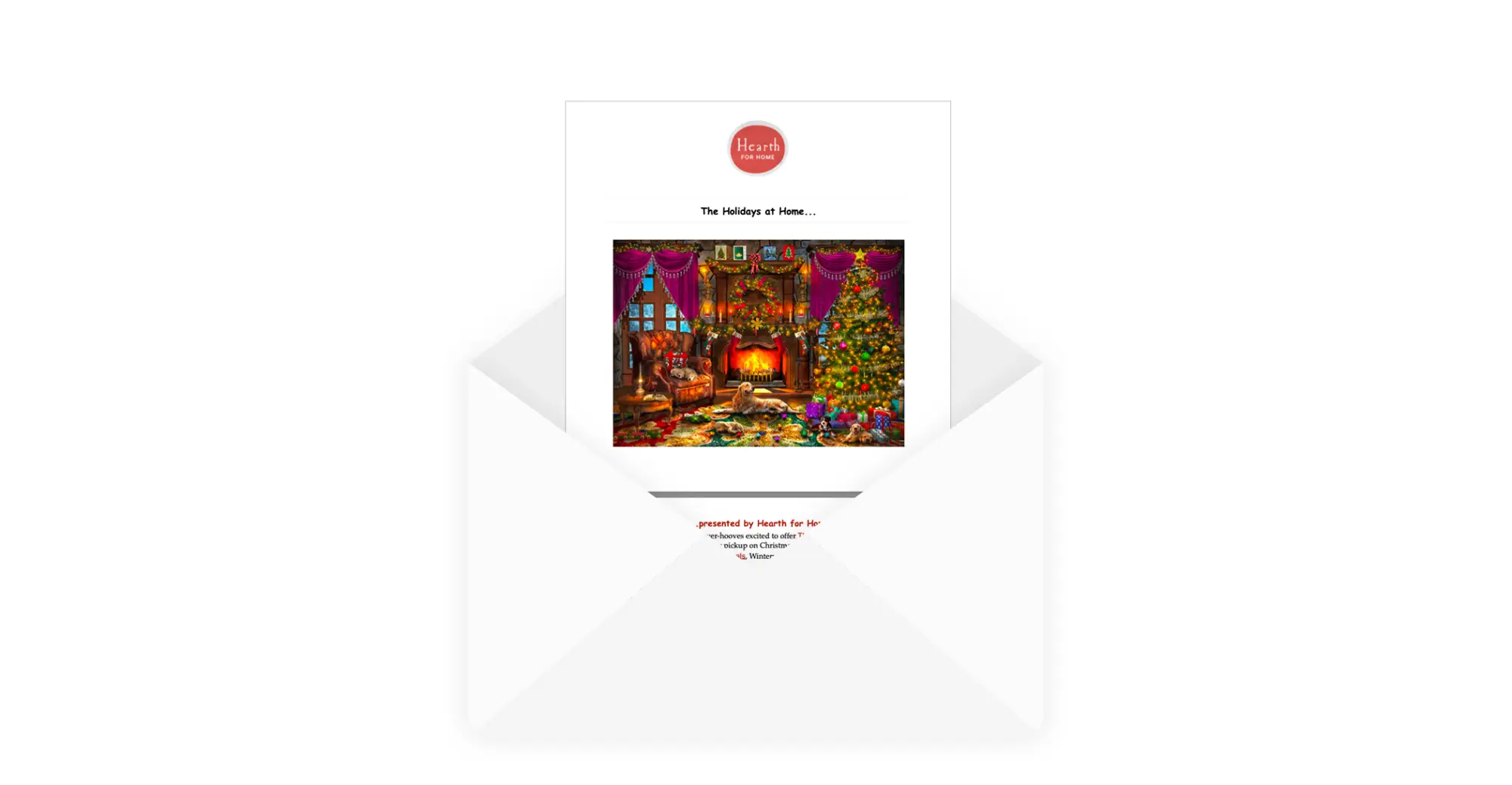
An example of an email from Hearth promoting holiday catering
Email is one of a restaurant’s most effective and cost-efficient marketing tools. Restaurants can leverage their customer database to send emails that promote holiday offerings — particularly signature packages like catering. Since recipients are either prior diners or opted-in subscribers, they are more likely to open, engage with and order from an email.
4. Promote Catering Through Social Media
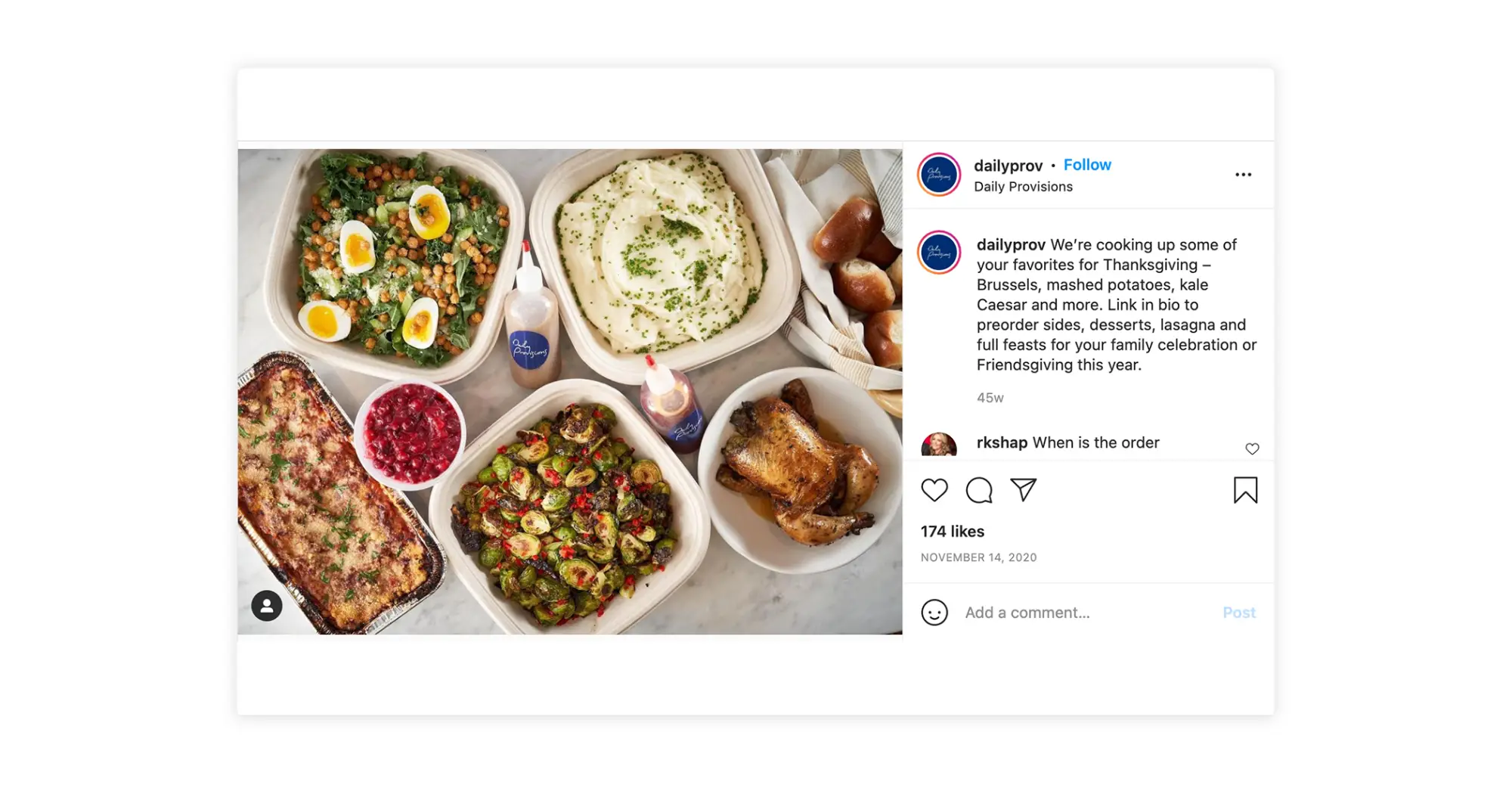
Daily Provisions promoted its Thanksgiving favorites on Instagram last year
Instagram, Facebook and increasingly TikTok are marketing playgrounds that restaurants use to define their brands and engage with followers. They are also useful tools for promoting new menus, events and catering, especially during holiday season. Last year, Daily Provisions — part of Union Square Hospitality Group — promoted various Thanksgiving staples for pre-order with an artful Instagram photograph. Restaurants can learn from Daily Provisions example, investing in social-first content production to generate awareness and demand.
5. Promote Catering Through The Website
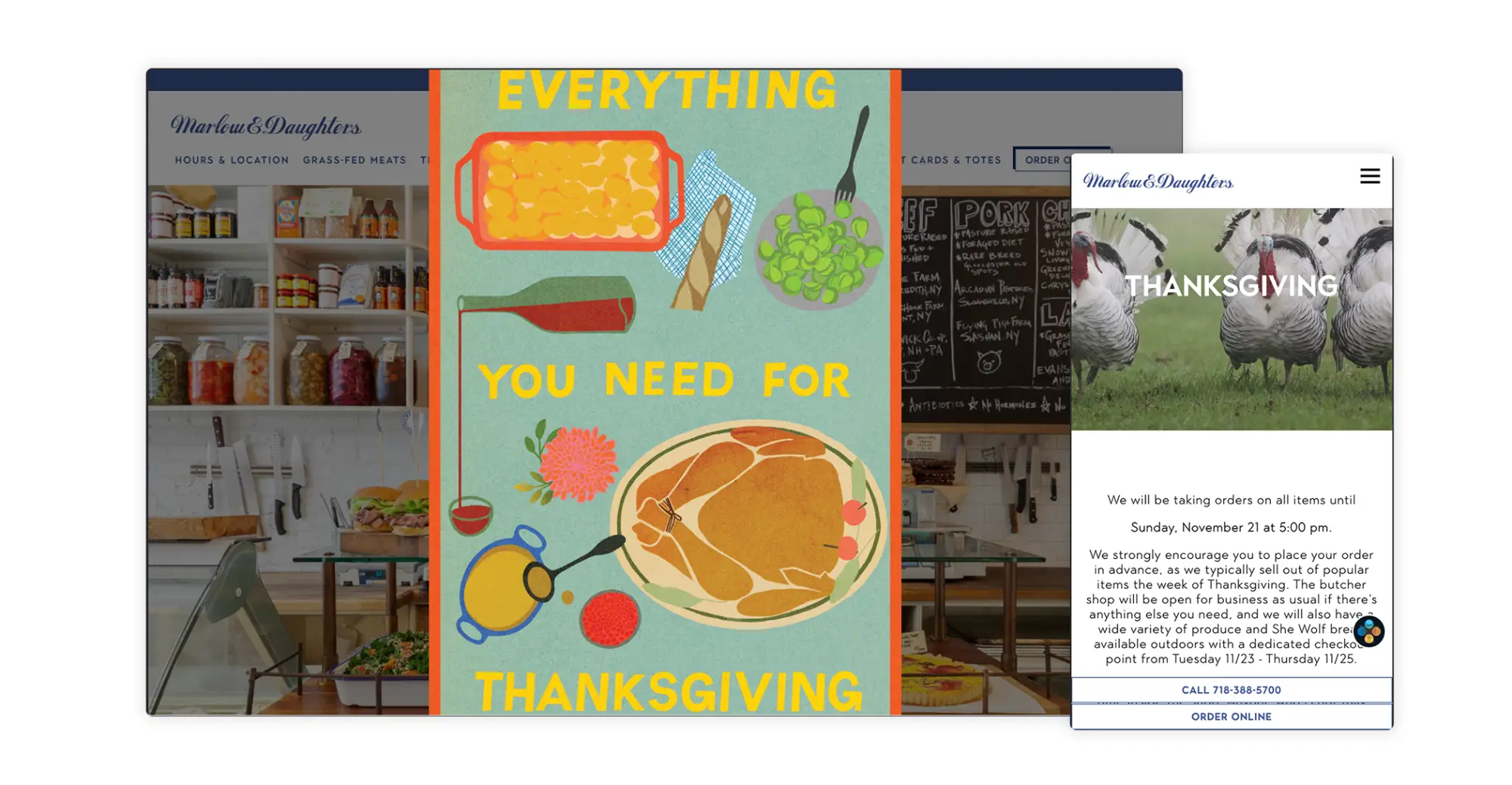
Marlow & Daughters promote Thanksgiving offerings through the website
As a general rule, traffic from any marketing channel — whether it’s email or social media — should always lead back to the website. Why? Because the website is the most essential tool in a restaurant’s marketing toolbox. It’s a restaurant’s digital front door, where diners first visit to learn more about the restaurant, view menus, order online and inquire about catering options. You can also draw special attention to catering promotions with pop-up alerts and standalone pages, as Marlow & Daughters does.
Bring It All Together
With the holidays just around the corner, the clock is ticking to get the most out of the season. While this year’s demand may fall short of last year’s, factors like the Delta variant and diner awareness will be sure to drive more catering sales than before the pandemic. Creativity, open-mindedness, technology adoption and data analysis are all key to a successful holiday season ahead.
Recommended
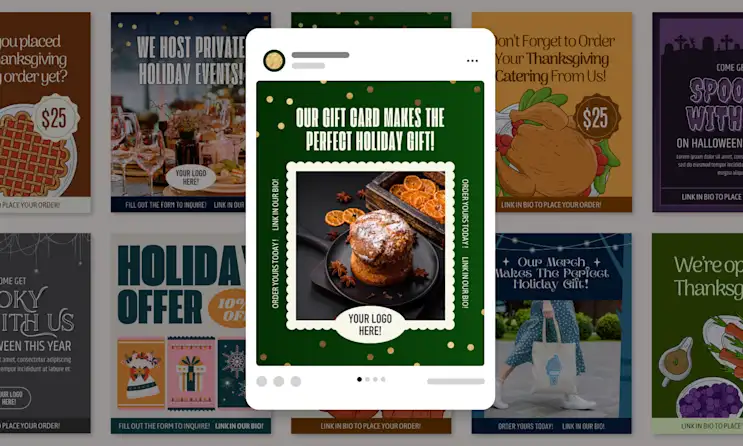
Holidays
15 Digital Marketing Holiday Templates for Restaurants
September 18, 2024
Give your holiday marketing some extra special treatment with one of the following templates.
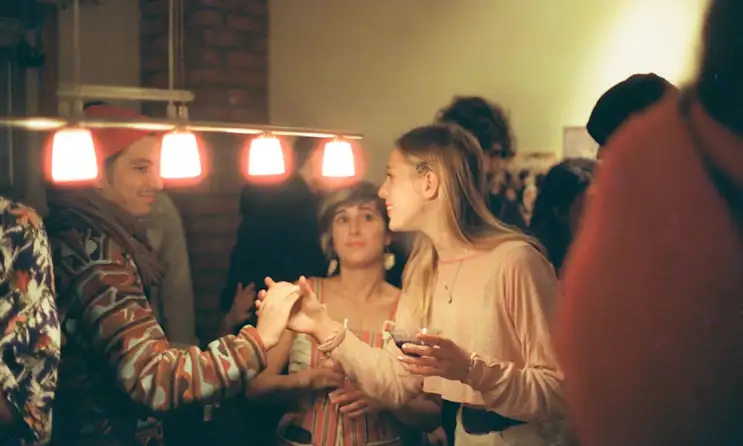
Community
What It’s Like Bartending the Night Before Thanksgiving
November 7, 2023
Three bartenders on what it’s like serving drinks on the busiest drinking night of the year.
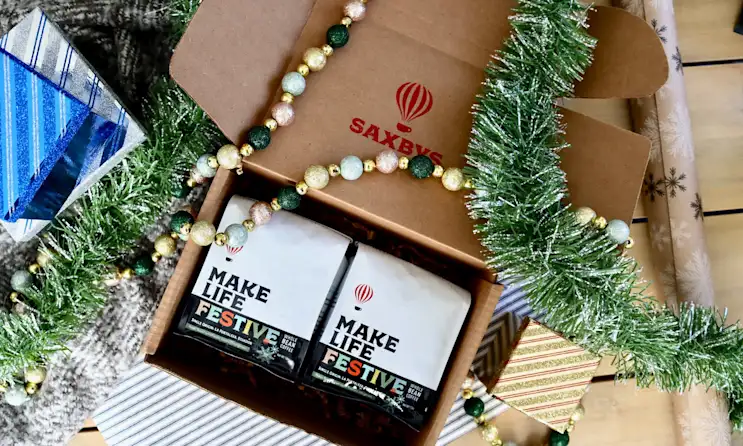
Holidays
6 Creative Ways to Promote Restaurant Gifts This Holiday
November 18, 2021
How to develop a strategic marketing plan to promote holiday restaurant gifts.
